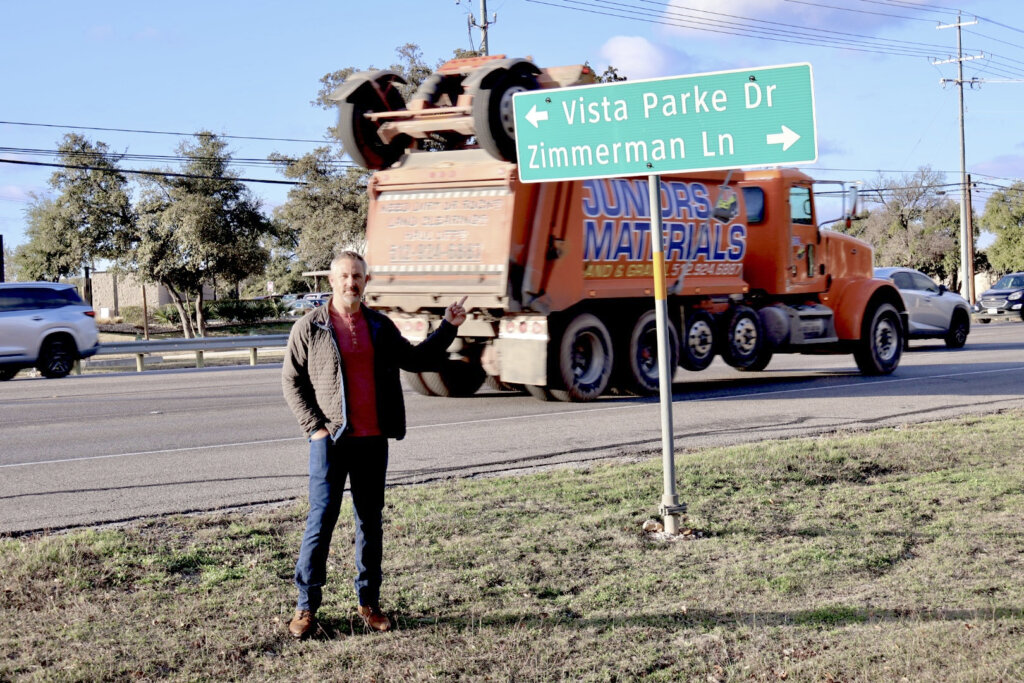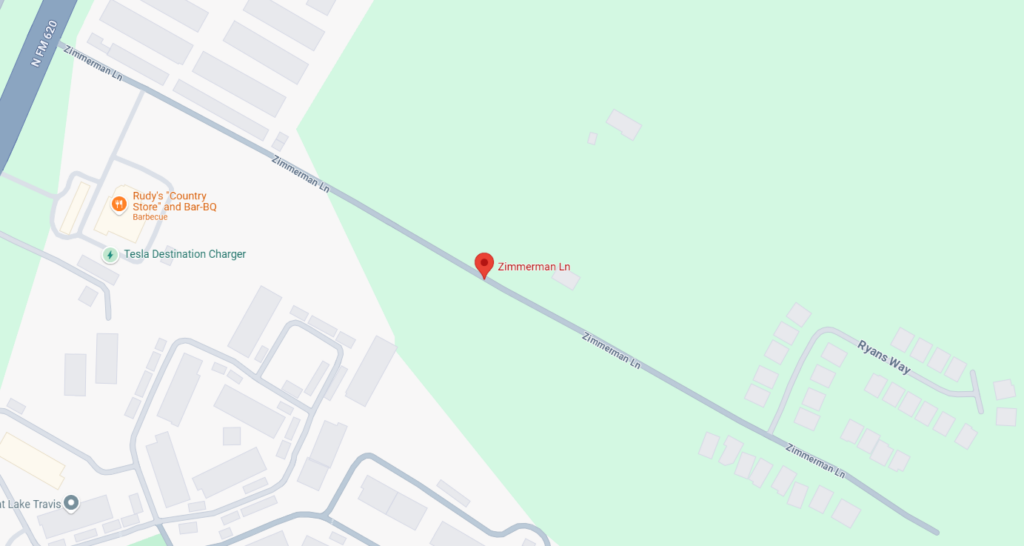
Photo by Jennifer Boyle

By JOHN D. BOYLE, Four Points News
Imagine, if you will, a quiet street nestled in the rolling hills of Northwest Austin. Zimmerman Lane, a narrow road discreetly located off FM 620, framed by single-family homes and a bustling barbecue landmark, now stands at the crossroads of past promises and future possibilities. In this space, the delicate balance between preservation and progress is about to be tested. Welcome to the Rezoning Zone.
A proposed zoning change for two parcels of land on Zimmerman Lane, located near Rudy’s County Store and Bar-B-Q on FM 620, has sparked intense community discussions. The application seeks to rezone these properties from Development Reserve (DR) and Single-Family Residence Standard Lot (SF-2) to Townhouse and Condominium Residence (SF-6), potentially paving the way for higher-density residential development. With implications ranging from traffic safety to environmental impact, residents and developers alike are voicing their perspectives in preparation for upcoming hearings.
Jordan Murray, The Woods at Four Points HOA president and a longtime resident of the area, has been at the forefront of discussions surrounding the rezoning. Reflecting on the neighborhood’s stance, Murray explained, “We’re not anti-development; we’re anti-unsafe development.” This sentiment is shared by many residents who worry about the potential consequences of increasing density on Zimmerman Lane, a road already struggling with limited infrastructure.
The rezoning request follows a similar application two years ago by Austin residents, the Kumar family. That process culminated in a compromise limiting density to four units per acre. This precedent has shaped community expectations for future development. “Toll Brothers, the developers behind the current proposal, have shown willingness to communicate and stay within the established density restriction,” Murray said. “But Zimmerman Lane still remains an unsafe street without proper mitigation.”
The Smith family, who originally owned much of the land under discussion, serves as a microcosm of another well-known Austin family—the Steiners. Just as the Steiner family gradually developed Steiner Ranch, the Smiths sold portions of their land over time for community development. Both families represent the fabric of Austin’s history, balancing personal legacy with the city’s growth. “It’s a logical progression,” Murray observed. “The Smiths, like the Steiners, are contributing to Austin’s development in a way that respects both the past and the future.”
Zimmerman Lane is a narrow, sidewalk-less road where pedestrian safety is a major concern. Families with young children and frequent delivery traffic add to the hazards. “More than half of the homes on Zimmerman have school-aged children,” Murray pointed out. “It’s critical to consider their safety when planning new developments.”
Adding to the complications is the lack of coordination between the City of Austin and TxDOT in managing traffic at the Zimmerman intersection. Residents, including Murray, have long advocated for a traffic light at the end of the street to reduce risks for drivers and pedestrians alike. “Honestly, a light at the end of the street would be paramount,” he said. “It’s in everybody’s best interest to get a light that ensures safety.”
Sidewalks are another essential element of the community’s requests. Previous agreements with developers included commitments to pedestrian pathways, but gaps in implementation have left the area vulnerable. “Sidewalks have been part of previous negotiations,” Murray noted, “and they’re essential for protecting pedestrians in our growing neighborhood.”
Proximity to the Balcones Canyonlands Preserve further complicates the debate. While rezoning does not directly impact preserve boundaries, increased housing density could lead to habitat fragmentation and greater human-wildlife interactions. These concerns echo past disputes, such as the denial of an emergency access road between Vandegrift High School and the old 3M property due to environmental protections.
Adding a layer of historical significance, the property under consideration was previously owned by the Smith family, longtime residents of the area. The family’s legacy has prompted a thoughtful approach to the rezoning request. “This isn’t about saying no to development,” Murray emphasized. “It’s about balancing growth while preserving the safety and character of our neighborhood.”
As the city’s zoning process unfolds, the neighborhood is taking proactive steps to ensure their concerns are heard. Residents are leveraging the structured rezoning timeline to provide input through written feedback, public hearings, and potential petitions. If 20% of property owners within 200 feet of the properties oppose the rezoning, a supermajority vote by the Austin City Council will be required for approval.
“Part of it is, we all have an obligation to get engaged,” Murray said. “If we miss things, it’s on us.” This proactive mindset reflects the broader challenge of managing growth in Austin, where neighborhoods like Zimmerman Lane serve as microcosms of the city’s broader tensions between preservation and progress.
For now, Zimmerman Lane waits, poised between what was and what could be, in the Rezoning Zone.
